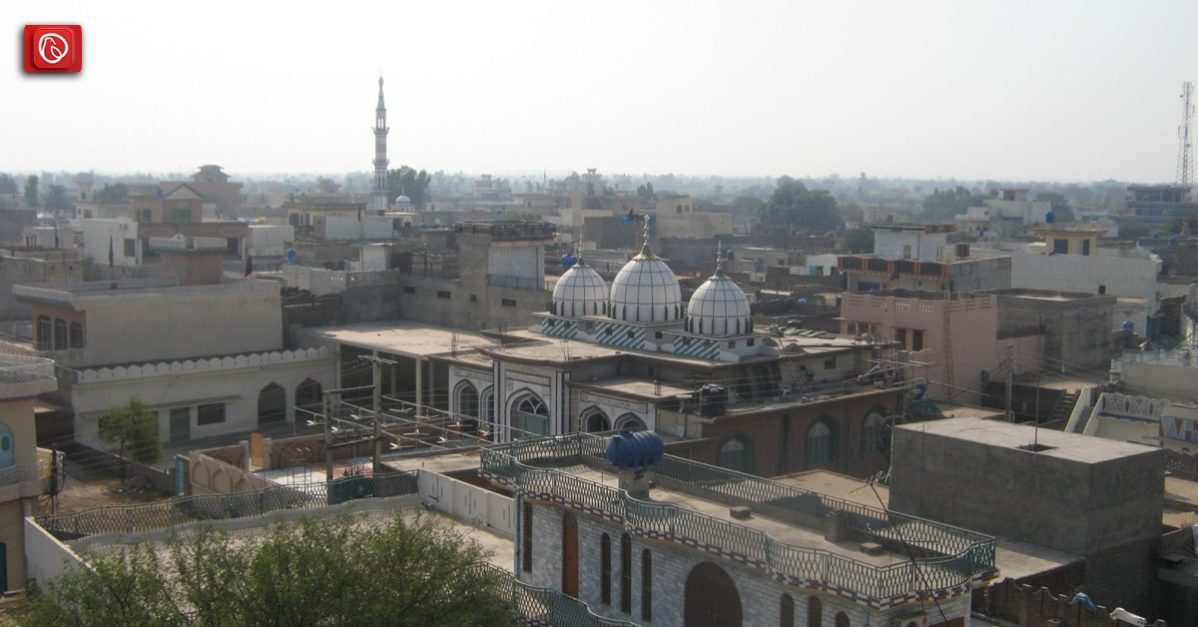
Haroonabad, located in the Bahawalnagar District, serves as an important tehsil headquarters. Though the town is not too old, it has witnessed significant development and growth over the years.
Established under the Sutlej Valley Project during the colonisation of the region in the early 20th century, Haroonabad has evolved from a small settlement to a thriving agricultural and commercial hub. Graana.com delves into the transformation of this town in more detail below.
Before the establishment of Haroonabad, the site was known as Toba Badru Wala. The term “Toba” translates to “pond” in the local language. According to legend, there was a large natural pond located to the north of the railway station, which would collect rainwater.
The presence of water in this otherwise barren area attracted the local residents, who primarily engaged in cattle farming and small-scale cultivation during the rainy season. The inhabitants belonged to the “Joiya Badru” caste, and thus, this small settlement came to be known as “Toba Badru Wala.”
Situated on the edge of the Cholistan desert, the famous desert in Pakistan, Haroonabad lies in close proximity to the Indian border. Apart from small-scale seasonal industrial activities related to cotton, such as washing and ginning, the town did not have any significant industries in the beginning.
A significant milestone in the region’s development occurred in 1927 when a branch railway line was constructed, connecting Fort Abbas with Bahawalnagar. In that same year, the railway station at Haroonabad was established and initially named Badru Wala Station.
This transportation link opened doors to new opportunities and paved the way for progress. Alongside the railway, a grain market, a few shops, and dwelling units started to spring up in Chaman Bazar, Railway Bazaar, and Main Bazaar, laying the foundation for future growth.
The establishment of the irrigation and canal system under the Sutlej Valley Project in 1934 was a game-changer for Haroonabad and its surrounding hinterland. It enhanced agricultural productivity and provided a strong economic base for the small settlement.
The construction of the 3R and 4R Canals enabled farmers to cultivate larger areas of land more efficiently. These advancements increased economic and commercial activities.
The town was renamed Haroonabad as a tribute to Prince Haroon-ur-Rashid, who was the son of Nawab of Bahawalpur Sir Sadiq Muhammad Khan Khamis. This renaming further strengthens the town’s identity and historical significance.
Following the partition of the subcontinent in 1947, Haroonabad witnessed a significant influx of refugees who sought refuge in the town.
This led to rapid growth due to the development of residential colonies and the establishment of essential social services, including educational and health institutions. The provision of public utilities further enhanced the quality of life, making it a suitable place to live.
As Haroonabad grew in population and prominence, its agricultural market flourished. The fertile lands surrounding the town were utilised for cultivating a wide range of crops, including wheat, cotton, sugarcane, and vegetables.
The establishment of agricultural markets, commonly known as “mandis”, played a pivotal role in making it a thriving economic hub. Farmers from nearby villages and towns flocked to the mandis to sell their produce, creating a vibrant marketplace.
Some of the famous languages in Pakistan are spoken here. The residents commonly use the Majhi and Malwai dialects of Punjabi as the primary language spoken here. Additionally, they also speak Bagri, a dialect of the Rajasthani language.
Bagri is prevalent in the adjacent areas along the southeast border of Indo-Pak Punjab. Bagri is characterized by high, level, and low lexical tones, and it shares 65% lexical similarity with Haryanvi.
The economy is mostly dependent on agriculture, with cotton being of significant importance, followed by cauliflower cultivation. Notably, the town is also home to the headquarters of two national tea brands, Vital Tea and Prime Tea.
Haroonabad experiences a hot and humid climate throughout the year. The months of May, June, and July bring extreme temperatures, ranging from 49 to 53°C.
In August, the monsoon season begins, bringing heavy rainfall to the area. December and January are the coldest months, with temperatures occasionally dropping to –1 °C. The average annual rainfall is approximately 160 mm.
Some of the notable places in Haroonabad include the Jamia Mosque, Government Boys High School, Railway Station Building, Municipal Committee Building, Office of the Market Committee, Govt. Rizvia Islamia Degree College, Vital City, and THQ Hospital.
For more information on similar blogs, visit Graana.com.
ISLAMABAD, Pakistan – April 23, 2025 – Chaaye Khana, Pakistan's popular cafe renowned for its…
ISLAMABAD: Prime Minister Shehbaz Sharif laid the foundation stone for the Murree Road underpass on…
DUBAI: Pakistani real estate developers and representatives showcased a range of commercial and residential investment…
ISLAMABAD: Capital Development Authority (CDA) is currently undertaking a major Rs652 million project to upgrade…
Karachi – Mayor Barrister Murtaza Wahab has announced the launch of a citywide anti-encroachment operation…
ISLAMABAD: CDA Chairman Muhammad Ali Randhawa has directed the immediate restoration of 23 non-functional water…